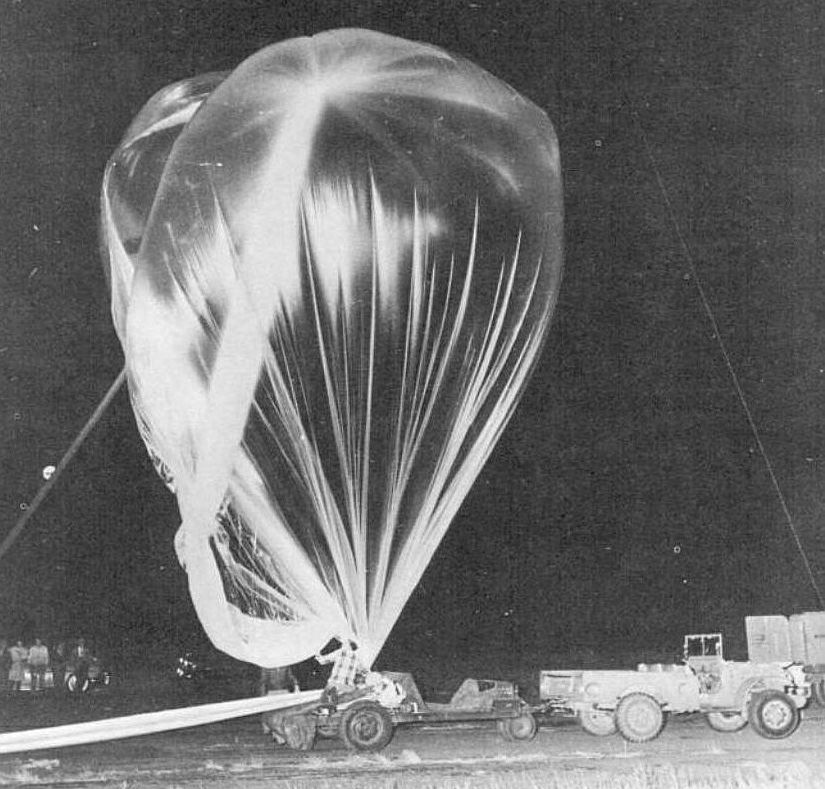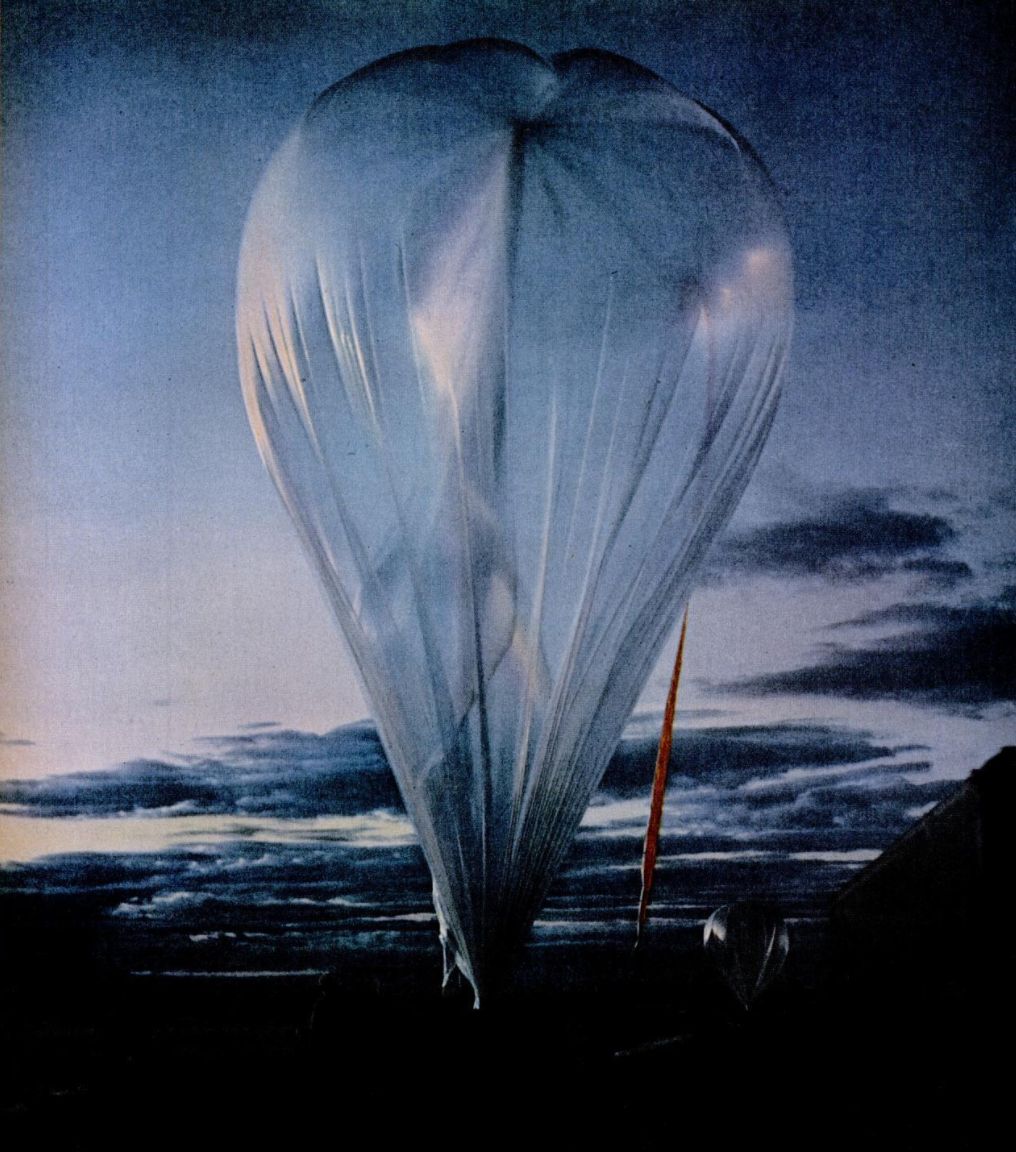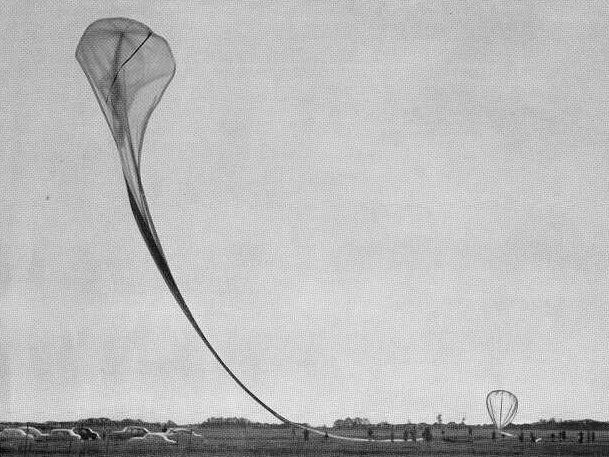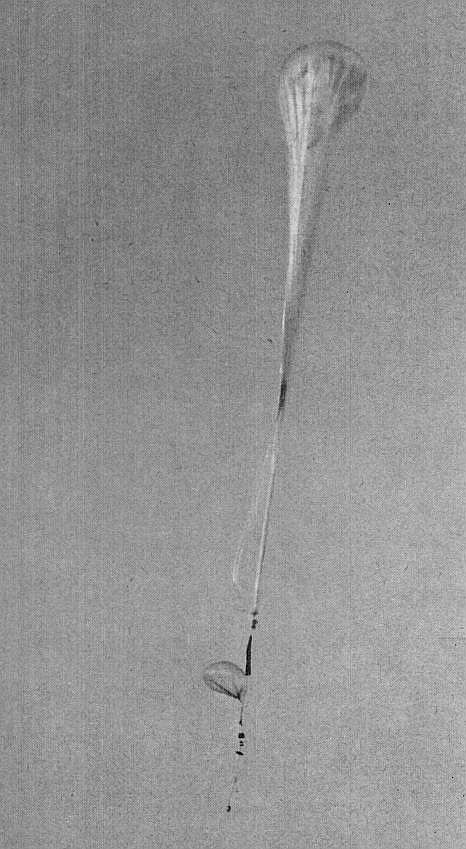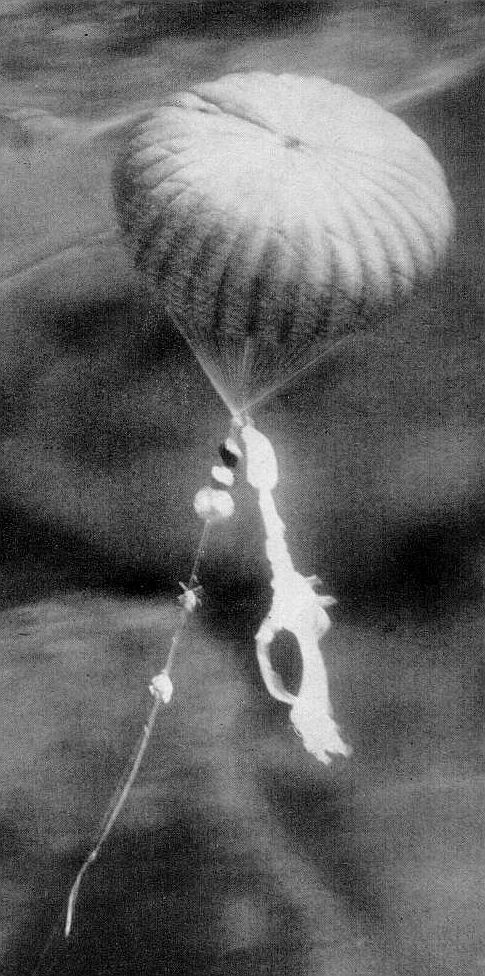Purpose of the flight and payload description
The so-called SUPER SKYHOOK mission was a test flight of a 3.200.000 cubic feet balloon manufactured by General Mills. At the time it was the largest one ever made. The balloon measuring 282 feet long when deflated and 200 feet in diameter at full inflation was made of polyethylene plastic 0.0012 inch thick and designed to float at an altitude of 120,000 feet.
The payload provided by the Office of Naval Research was devoted to study cosmic-ray particles.
Details of the balloon flight
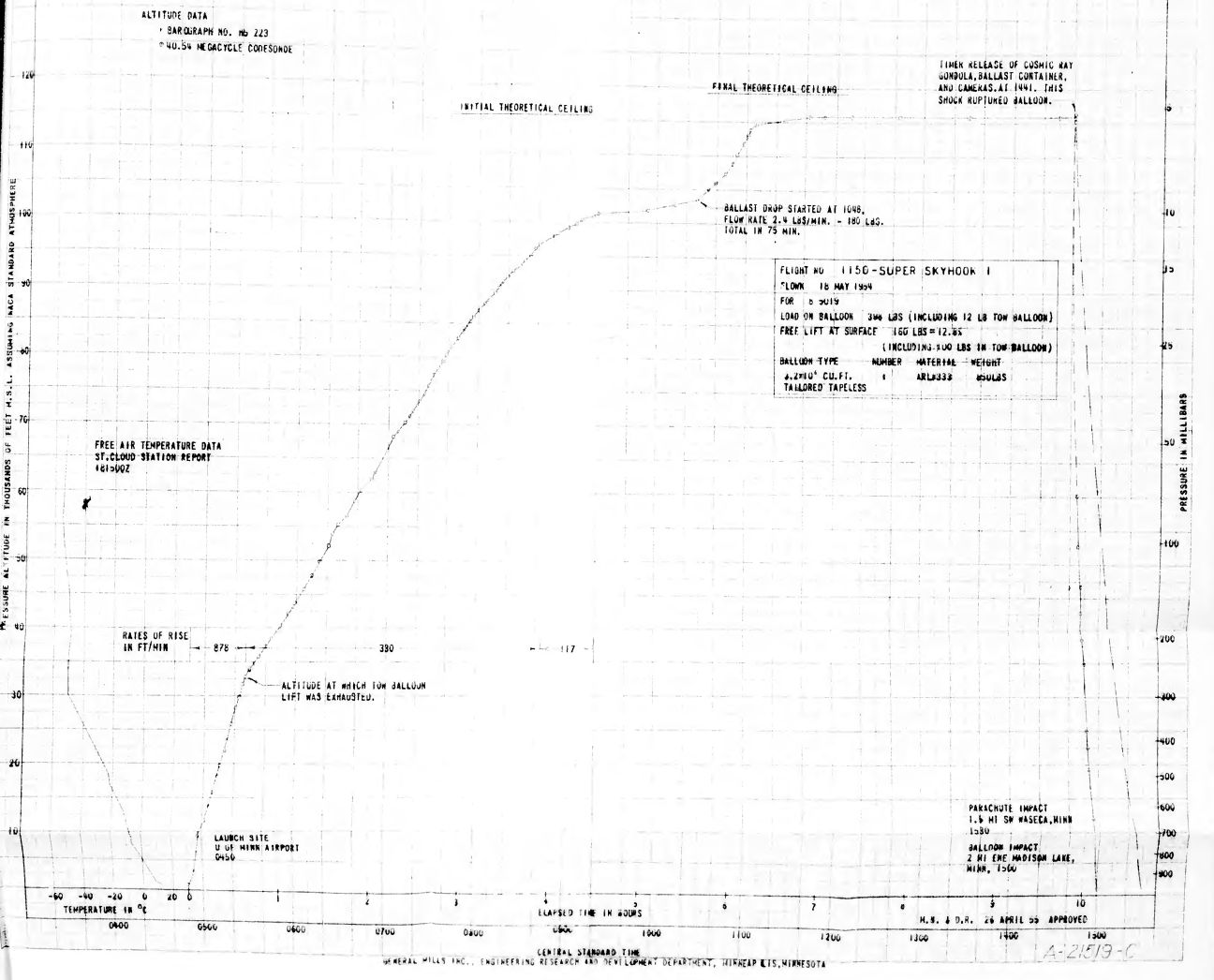
Balloon launched on: 5/18/1954 at 4:50 cst
Launch site: University of Minnesota Airport, New Brighton, US
Balloon launched by: General Mills Inc.
Balloon manufacturer/size/composition: Zero Pressure Balloon General Mills - 3.200.000 cuft (200 feet in diameter)
Flight identification number: GMI Nº 1150
End of flight (L for landing time, W for last contact, otherwise termination time): 5/18/1954 at 15:00 cst (L)
Balloon flight duration (F: time at float only, otherwise total flight time in d:days / h:hours or m:minutes - ): 10 h
Landing site: Near Waseca, Minnesota, US
Payload weight: 400 lb
The balloon was launched at 4:50 cst on May 18 1954, from the General Mills Flight Facility in the University of Minnesota airport near New Brighton, Minnesota. In the graphic above can be seen the altitude data and flight profile of the mission. After a nominal ascent, the balloon reached an altitude of 116.700 feet breaking the existing world's altitude record of 111,000 feet. The balloon drifted about 190 miles cross country and in clear areas, it was visible for 80 to 90 miles. After 10 hours aloft, the flight was terminated. The payload was recovered near Waseca while the balloon landed in Madison Lake, both cities in Minnesota.
External references
- Plastic balloon launched Santa Cruz Sentinel, Volume 99, Number 118, 19 May 1954 , Pag. 8
- Super Balloon: big bag goes after cosmic rays LIFE magazine - 14Jun. 1954
11001If you consider this website interesting or useful, you can help me to keep it up and running with a small donation to cover the operational costs. Just the equivalent of the price of a cup of coffee helps a lot.

